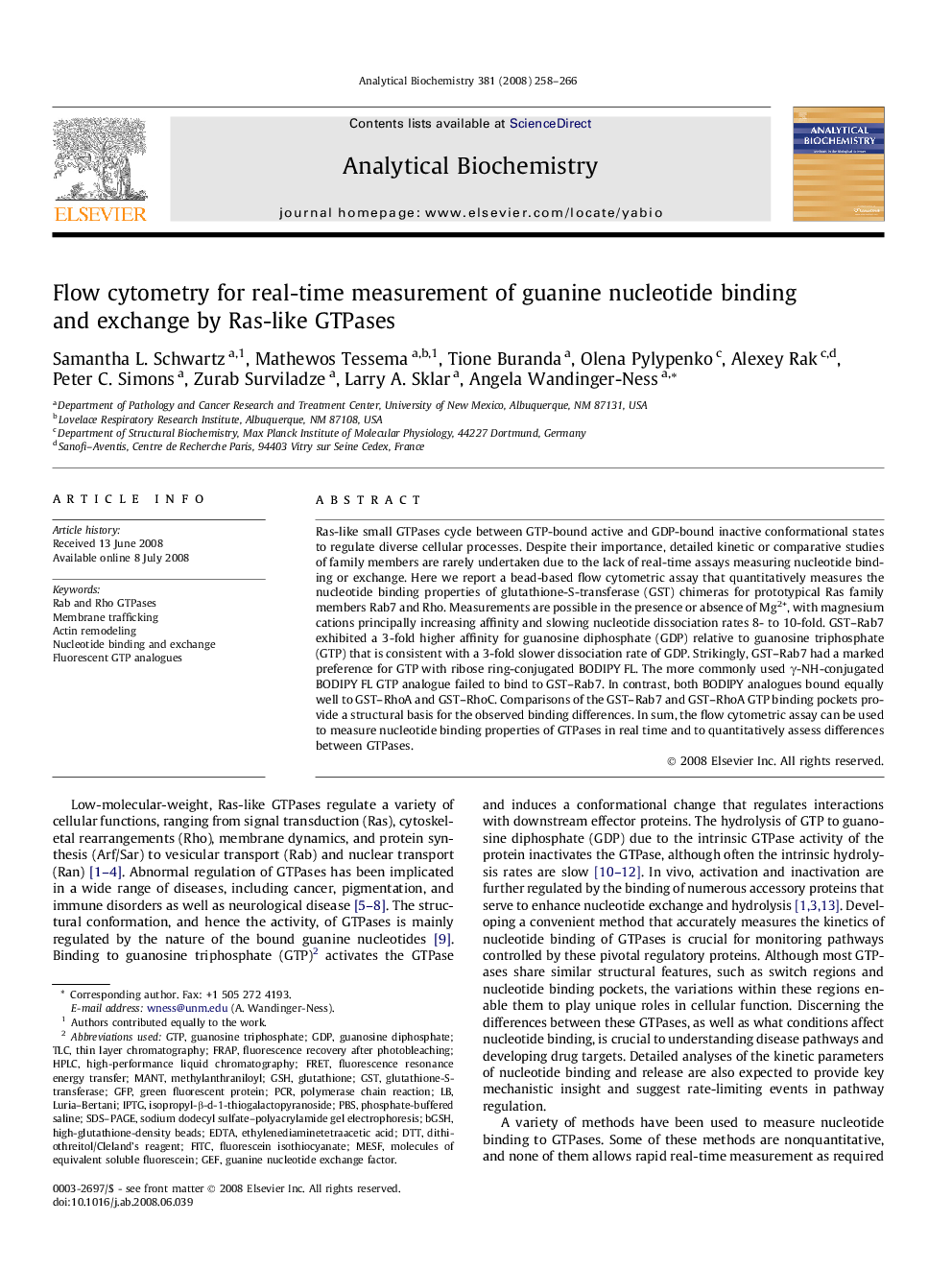| Article ID | Journal | Published Year | Pages | File Type |
|---|---|---|---|---|
| 1174679 | Analytical Biochemistry | 2008 | 9 Pages |
Ras-like small GTPases cycle between GTP-bound active and GDP-bound inactive conformational states to regulate diverse cellular processes. Despite their importance, detailed kinetic or comparative studies of family members are rarely undertaken due to the lack of real-time assays measuring nucleotide binding or exchange. Here we report a bead-based flow cytometric assay that quantitatively measures the nucleotide binding properties of glutathione-S-transferase (GST) chimeras for prototypical Ras family members Rab7 and Rho. Measurements are possible in the presence or absence of Mg2+, with magnesium cations principally increasing affinity and slowing nucleotide dissociation rates 8- to 10-fold. GST–Rab7 exhibited a 3-fold higher affinity for guanosine diphosphate (GDP) relative to guanosine triphosphate (GTP) that is consistent with a 3-fold slower dissociation rate of GDP. Strikingly, GST–Rab7 had a marked preference for GTP with ribose ring-conjugated BODIPY FL. The more commonly used γ-NH-conjugated BODIPY FL GTP analogue failed to bind to GST–Rab7. In contrast, both BODIPY analogues bound equally well to GST–RhoA and GST–RhoC. Comparisons of the GST–Rab7 and GST–RhoA GTP binding pockets provide a structural basis for the observed binding differences. In sum, the flow cytometric assay can be used to measure nucleotide binding properties of GTPases in real time and to quantitatively assess differences between GTPases.
